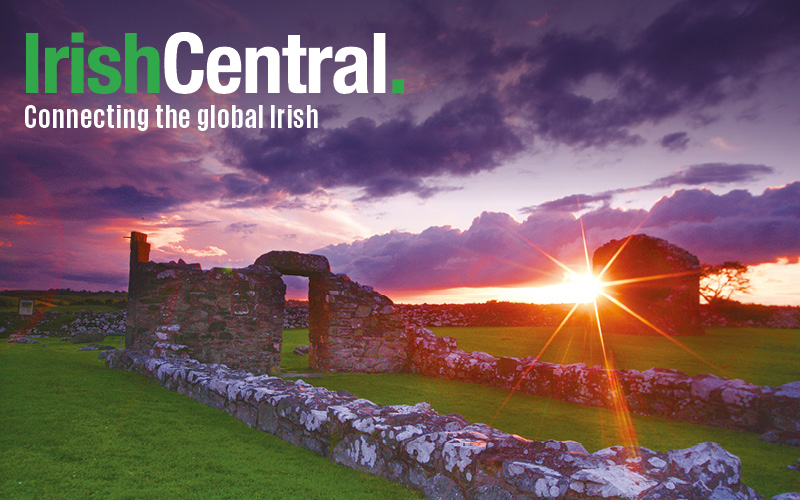“They used to call them blackberry men, because they ate the blackberries off the bushes,” South East Galway Irish Rural Development Manager Ursula Marmion explains, “Knights of the road, itinerant workers.”
Blackberry men, knights of the road, paupers or inmates, whatever you want to call them, they were the residents of the workhouse; a part of Irish history that has left memories of dire poverty.
“It was a system to gather up people who were wandering around the place, didn’t have any work or didn’t have anyone to look after them,” local historian and author John Joe Conwell said.
“The idea was to feed them, clothe them and give them a bit of work, hence the name workhouse,” Conwell explained.
An Irish Workhouse Center in Portumna, County Galway wants to preserve the workhouse’s stories and retell them to visitors.
The goal is, “To tell the story of the Irish workhouse, because that hasn’t been done very comprehensively,” Marmion said and added, “It’s kind of a period of history we just choose to forget about, because I suppose it is just so painful for people.”
Many people committed crimes intentionally to go to jail rather than go into a workhouse Conwell said. “You would be better fed in jail than you would in the workhouse,” he added.
The concept of developing a workhouse center explaining the history of Irish workhouses seemed outlandish initially.
“At the beginning I think they (local community) thought we were all a bit mad,” said Marmion and added, “The local community has really bought into this. Just yesterday, we had a massive clean-up of the site. We had almost forty people working here,” Marmion said.
The goal is to prepare the Irish Workhouse Center Portumna for a “soft opening on July 1,” said Marmion.
Visitors to the Irish Workhouse Center Portumna on July 1 can expect a visitor’s center telling the history of the Irish workhouse. The history according to Marmion is interesting.
“The workhouse sort of embodies the story of the destitute poor of that time,” Marmion said. “We still have Portumna castle where the landlord lived, so you had two sides of the coin,” she said.
The other “side of the coin,” is the painful part. Wealth and poverty co-existed in towns like Portumna during the famine years.
Local landlords during famine years were required pay the keep of people residing in the workhouse who had a valuation of less than four pounds.
“As a result the landlords moved out people, assisted immigration,” Conwell explained and added,
“It was cheaper to get assisted immigration, give them a few pounds, pay their fare.”
The population of the town of Portumna and surrounding lands plummeted as a result of immigration and starvation during the years 1845 to 1850, when the potato blight was at its’ peak.
“We have records of boat loads of paupers leaving Portumna for Liverpool to sail for America,” Conwell added and said, “They were the lucky ones.”
Funding for the workhouse renovation has come primarily from government agencies and within the local community.
“We’ve got funding from Galway Rural Development, Galway County Council, The Department of the Environment, The Heritage Council,” Marmion said.
Money has become of primary concern at present due to the recession in Ireland.
“To date we have spent 312,000 Euro on the project,” Marmion said. “To get it up and going we are looking at raising the guts of three million here,” she said and added, “The money is very tight here with people.”
Preservation of the seven buildings on over eight acres is a labor of love for both Marmion and Conwell.
“We have a good team,” Marmion said. “It’s a joy for me. I love coming to work everyday. Its such a nice project to be working on,” she added.
According to Conwell the Irish Workhouse Center in Portumna County Galway will become, “an integral part,” of Irish descendants abroad tracing ancestry and understanding why they left.
“I am getting a lot of inquiries about people abroad who have traced their ancestry to here,” Conwell said and added, “We are trying to encourage people to come back and trace their ancestry and the workhouse has a role there too.”
With an estimated 70 million in the Irish Diaspora Conwell and Marmion want to get the story of the Irish Workhouse Center to as many Irish descendants as they can.
“We have a huge amount of nameless people whose descendants are still alive around the world and we’d love to be able to help them,” Conwell said.
The launch of the Irish Workhouse Center website, irishworkhousecentre.ie, on June 21 will provide the 70 million Irish Diaspora an opportunity to learn the story of the Irish workhouse, assist financially and help with ongoing preservation efforts through the Friends of the Irish Workhouse Center program on the website.




Comments